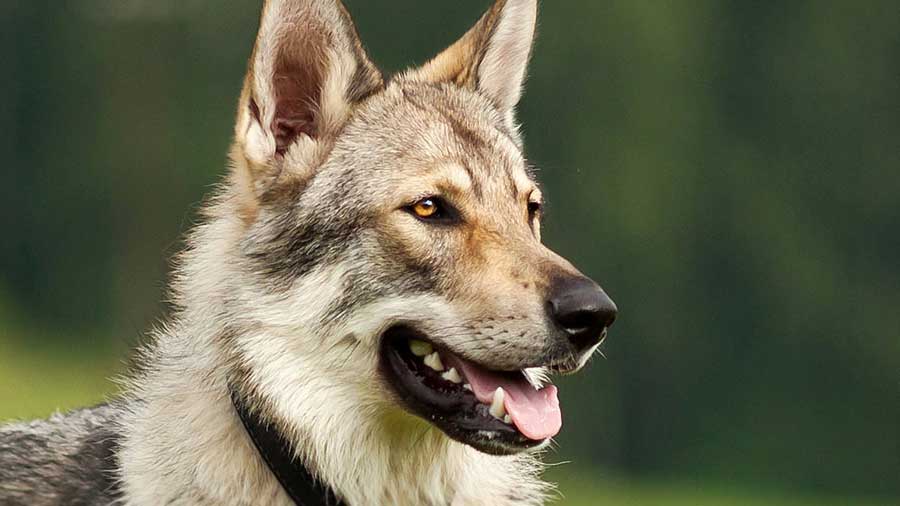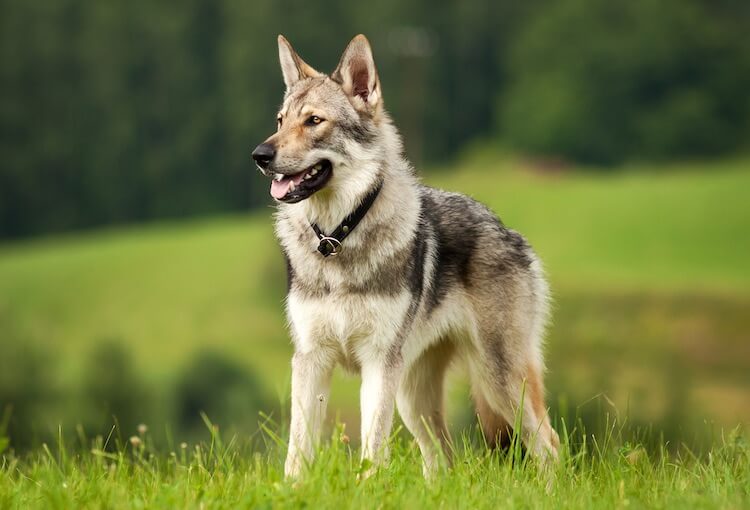Other names: Československý vlčák (Czech), Československý vlčiak (Slovak), Czechoslovak Vlcak (USA – official name under AKC, UKC).
The Czechoslovak Wolfdog is a relatively new dog-breed of wolf-dog that traces its original lineage to an experiment conducted in 1955 in Czechoslovakia.
After initially breeding working line German Shepherds with Carpathian grey wolves, a plan was worked out to create a breed that would have the temperament, pack mentality, and trainability of the German Shepherd and the strength, physical build and stamina of the Carpathian wolf.
The breed was engineered as attack dogs for use in military special operations done by the Czechoslovak special forces commandos but were later also used in search and rescue, Schutzhund-sport, tracking, herding, agility, obedience, hunting and drafting in Europe and the United States.
History

In 1955, Ing. Karel Hartl began to consider crossing a Carpathian grey wolf with a German Shepherd-Dog as a scientific experiment at the military kennels in Czechoslovakia. A few years later, however, the idea was born to establish a new breed. The first hybrids of a female wolf named Brita and a male German Shepherd-Dog named Cézar were born on 26 May 1958 in Libějovice.
Puppies of the first generation resembled the wolf in appearance and behaviour. Their upbringing was difficult; training was possible, but the results hardly matched the effort. In adulthood, they were again bred with German Shepherd-Dogs, decreasing the proportion of “wolf-blood” to 6.25% in the fourth generation. Most individuals of the third and fourth generations were able to attend a normal course and could be placed in service performance. Compared with dogs they had better navigational skills, night vision, hearing, and sense of smell. In tests of endurance, hybrids finished the entire 100 km route without being exhausted.
The lecture of Ing. Karel Hartl, “Results of crossing wolves with dogs”, brought major attention at the World Dog Show held in June 1965 in Brno and Prague at the annual meeting of the (FCI) and the International Cynologic Congress. In the following year, Ing. Hartl compiled a draft standard of a new dog breed. Mating of the wolf Brita with the German Shepherd-Dog Kurt then created the basis of a second line. A third line was made by joining the wolf Argo with the female German Shepherd-Dog Asta from the SNB. In 1977, a 3rd-generation hybrid female named Xela of the border guards was covered by the wolf Sarika; he also mated with the female Urta of the border guards.
However, the breed-in-foundation repeatedly refused recognition, and in the 1970s, most breeding dogs were moved to the Slovakian military kennels near Malacky, under the supervision of Vice-commander Major František Rosík. In 1971–1981, litters were born only in Slovakia. In 1982, the Club of Czechoslovakian Wolfdog Breeders (Klub chovatelů československého vlčáka) was founded in Brno, with authority over the entire territory of former Czechoslovakia.
In 1982, the breed was again presented for recognition by František Rosík through the Club of Czechoslovakian Wolfdog Breeders (now divided into Czech and Slovakian Breed Club), and this time, it was recognized by the Czechoslovakian breeder’s associations as a national breed. The last addition of wolf-blood took place in 1983. The wolf Lejdy of Ohrada Zoo in Hluboká nad Vltavou gave birth to the last line of the new breed, the father of the puppies being the German Shepherd-Dog Bojar von Shottenhof. Since that time, breeding has been carried out only in closed populations and the developed breed referred to as Czechoslovakian Wolfdogs.
In 1989, it became provisionally recognized as FCI standard no. 332, group 1, section 1. It won the title of “World Champion” at the World Dog Show in Brno in 1990. Ten years later, in 1999, the breed confirmed its viability and met all the criteria of the FCI, earning full recognition of the Czechoslovakian Wolfdog breed.
In 2012, the breed numbered 168 adult females and 170 adult males officially registered in the Czech Republic. As of January 2014, the most puppies each year are registered in Italy (up to two hundred), in the Czech Republic (about 100), and Slovakia (about 50). The breed is growing in popularity in the UK too, with some Czechoslovakian Wolfdogs working in Search and Rescue, supported by a dedicated Breed Club.
Appearance
Both the build and the haircoat of the Czechoslovak Wolfdog are reminiscent of a wolf. The lowest shoulder height is 65 cm (26 in) for a male and 60 cm (24 in) for a female, and there is no upper limit. The body frame is rectangular, with the ratio of the height to length being 9:10 or less. The minimum weight is 26 kg (57 lb) for males and 20 kg (44 lb) for females. The expression of the head must indicate sex. Amber eyes set obliquely and short upright ears in a triangular shape are its characteristic features. The set of teeth is complete (42) and very strong; both scissors-shaped and pliers-shaped dentition is acceptable. The spine is straight, strong in movement, with a short loin. The chest is large and flat rather than barrel-shaped. The belly is strong and drawn in. The back is short and slightly sloped; the tail is high set, and when freely lowered reaches the tarsi. The forelimbs are straight and narrow-set, with the paws slightly turned out, with a long radius and metacarpus. The hind limbs are muscular, with a long calf and instep.
The coat colour is yellow-grey to silver-grey, with a light mask. The hair is straight, close, and very thick. The Czechoslovakian Wolfdog is a typical tenacious caterer; its movement is light and harmonious, and its stride is long.
